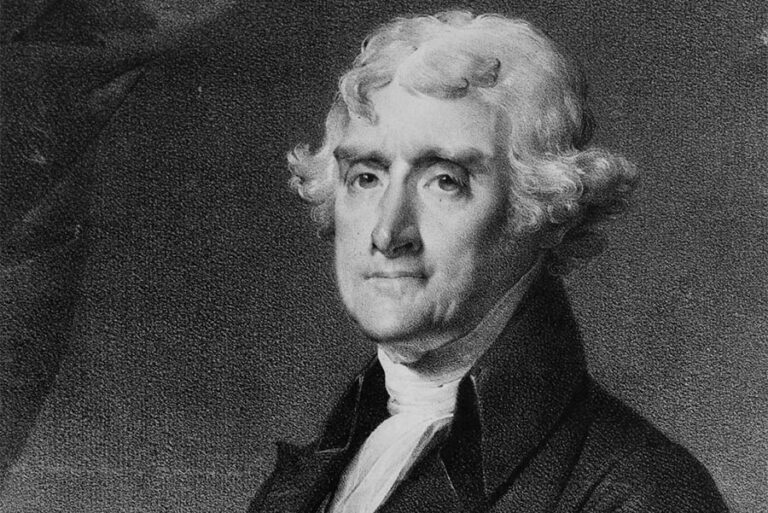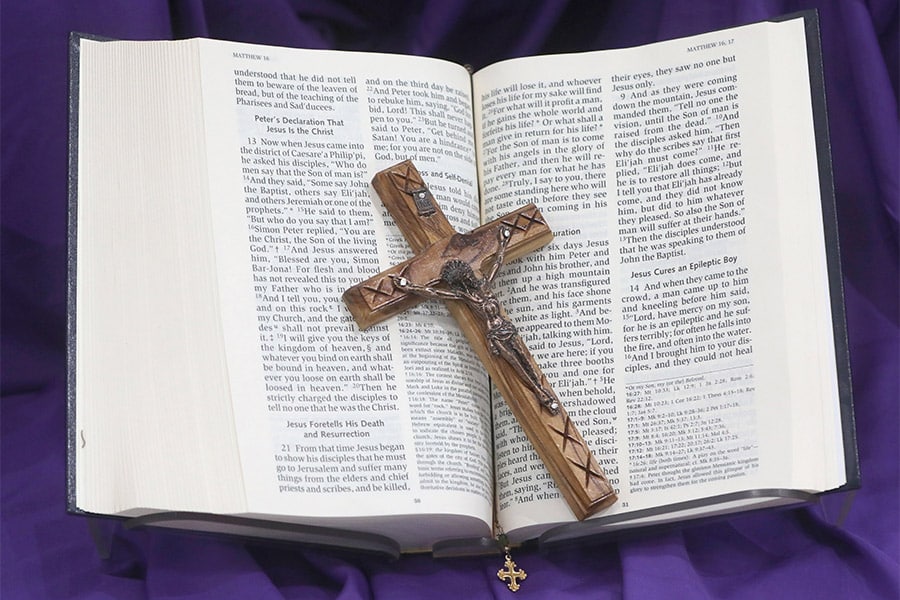In a Jan. 1, 1802, letter to the Danbury, Conn., Baptist Association, President Thomas Jefferson wrote one of the most famous sentences in American presidential history. After quoting the religion clauses of the First Amendment to the U.S. Constitution — Congress shall “make no law respecting an establishment of religion, or prohibiting the free exercise thereof” — Jefferson asserted that these clauses built “a wall of separation between Church & State.” He thus coined a metaphor that is as much a part of American identity as baseball and apple pie.
The metaphor is pernicious. It is wholly at odds with Catholic moral doctrine and corrosive of human good.
Jefferson’s letter could be paraphrased as, “If one’s opinions are formed by religious conviction, they are not allowed in public life.” This is, indeed, consistent with Jefferson’s hostility to religion, most especially Trinitarian Christianity, which he considered heresy. And yet, many Catholics readily endorse this “wall of separation” as though it came from the mouth of God.
One might raise two reasonable objections to my assertions. First, one might counter that Jefferson’s words are his private opinion; they are not law and have no binding force. The second response might be that the First Amendment itself doesn’t say what Jefferson contends. While plausible, neither objection withstands scrutiny.
The first (the “wall of separation” is merely Jefferson’s personal opinion) is defeated by the incorporation of the metaphor, and thus the doctrine, into Supreme Court case law. In the 1879 case of Reynolds v. United States, SCOTUS quoted Jefferson’s letter, and then concluded, “Coming as this does from an acknowledged leader of the advocates of the measure, it may be accepted almost as an authoritative declaration of the scope and effect” of the First Amendment.
In the 1947 case, Everson v. Board of Education, the court not only invoked the wall of separation, but enlarged and fortified it. “The First Amendment has erected a wall between church and state,” wrote Justice Hugo Black. “That wall must be kept high and impregnable. We could not approve the slightest breach.”
Many believe that the majority in Everson did indeed breach the wall, as the dissenting justices complained. The point, though, is that the “wall of separation,” while first coined in Jefferson’s private letter, has become public law, however inconsistently courts have applied it.
The second objection, that the First Amendment doesn’t use (or even imply) the wall metaphor is essentially answered above. In addition, however, both Jefferson and his great contemporary James Madison, wrote often about their desire to protect public life from religiously informed practices.
Both Jefferson and Madison intended and believed that the First Amendment would erect Jefferson’s wall. As I argued in my book, “The American Myth of Religious Freedom,” their intention was to “protect” public life from religious believers, by isolating and excluding the exercise of religion from political and policy considerations. When we Catholics invoke this “wall of separation,” we contribute to the very political philosophy that is intended to exclude the exercise of our faith from public life.
The Catholic understanding of the relationship of the church to politics is not expressed in the 1791 First Amendment, but rather in the 494 letter from Pope Gelasius I to the Byzantine Emperor Anastasius I Dicorus, commonly known as “Duo sunt,” or “There are two.” In this letter, Pope Gelasius articulated a proper understanding of the distinct spheres of the church and the government, and the limits of that distinction.
“There are two means … by which this world is chiefly ruled: the sacred authority of the priests and the royal power,” wrote Gelasius. Of these, the responsibility of the priests is greater because they must render “an account for the kings of men at the divine judgment.”
There are two orders, and their roles are distinct. But to the contrary of a wall between them, the order of the magistrate is subordinate to the authority of the church. As the pope continued to instruct the emperor, “You recognize that you should be subordinate to the priestly order rather than rule over it, and so in these things you depend on their judgment and do not wish to bend them to your will.”
This is not to impose any particular political order. Rather, Gelasius is teaching that all political order is subordinate to God, as his will is expressed through the church. This is, of course, exactly opposite Jefferson’s wall. And it remains the doctrine of the church, as clearly articulated, for example, in “Quas Primas,” Pope Pius XI’s 1925 letter instituting the feast of Christ the King.
It is crucial to note that Gelasius’ vision of the role of religious opinion to political life is identical in form to Jefferson’s. Jefferson (along with his secularist heirs) believes that his religious beliefs should be the dominant ones in public life, to the exclusion of all others. This is no different from Gelasius. Indeed, everyone believes that their religious opinions should prevail.
The only question is whose are given preference and whose are repressed. For the Catholic, the answer should be obvious. We must reject the “wall of separation” as the formula for religious repression that it is.
Read More Commentary
Copyright © 2024 OSV News








